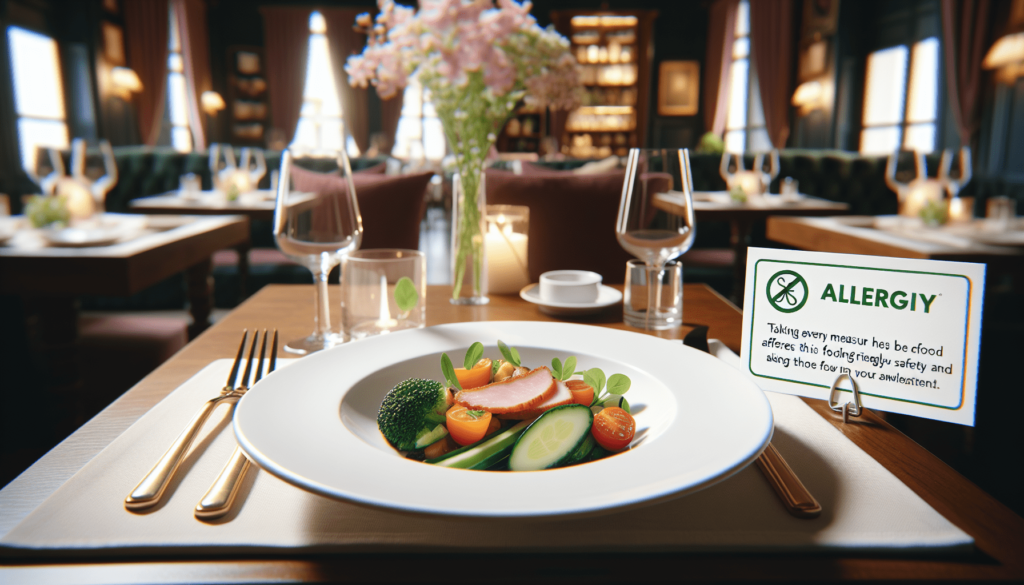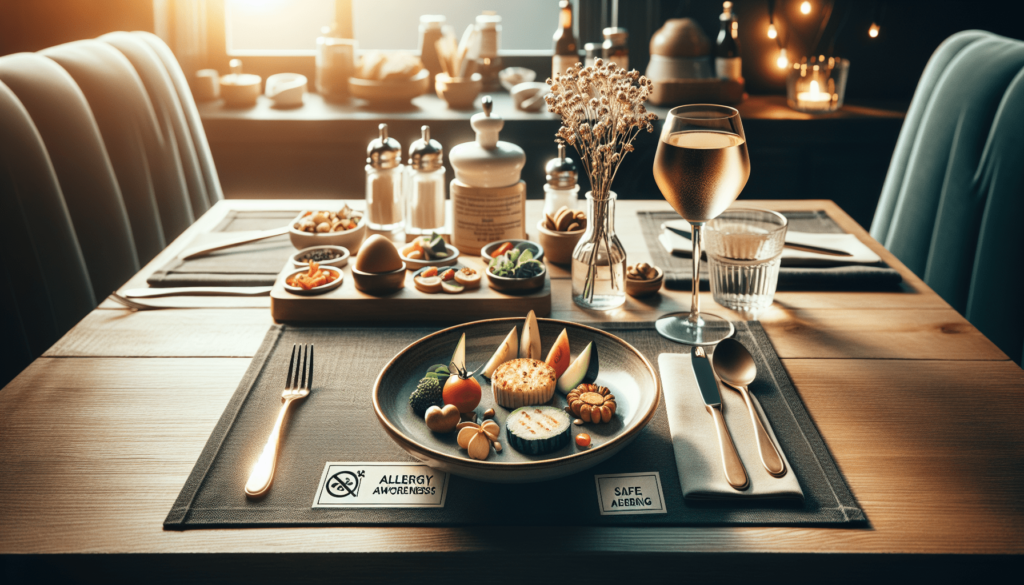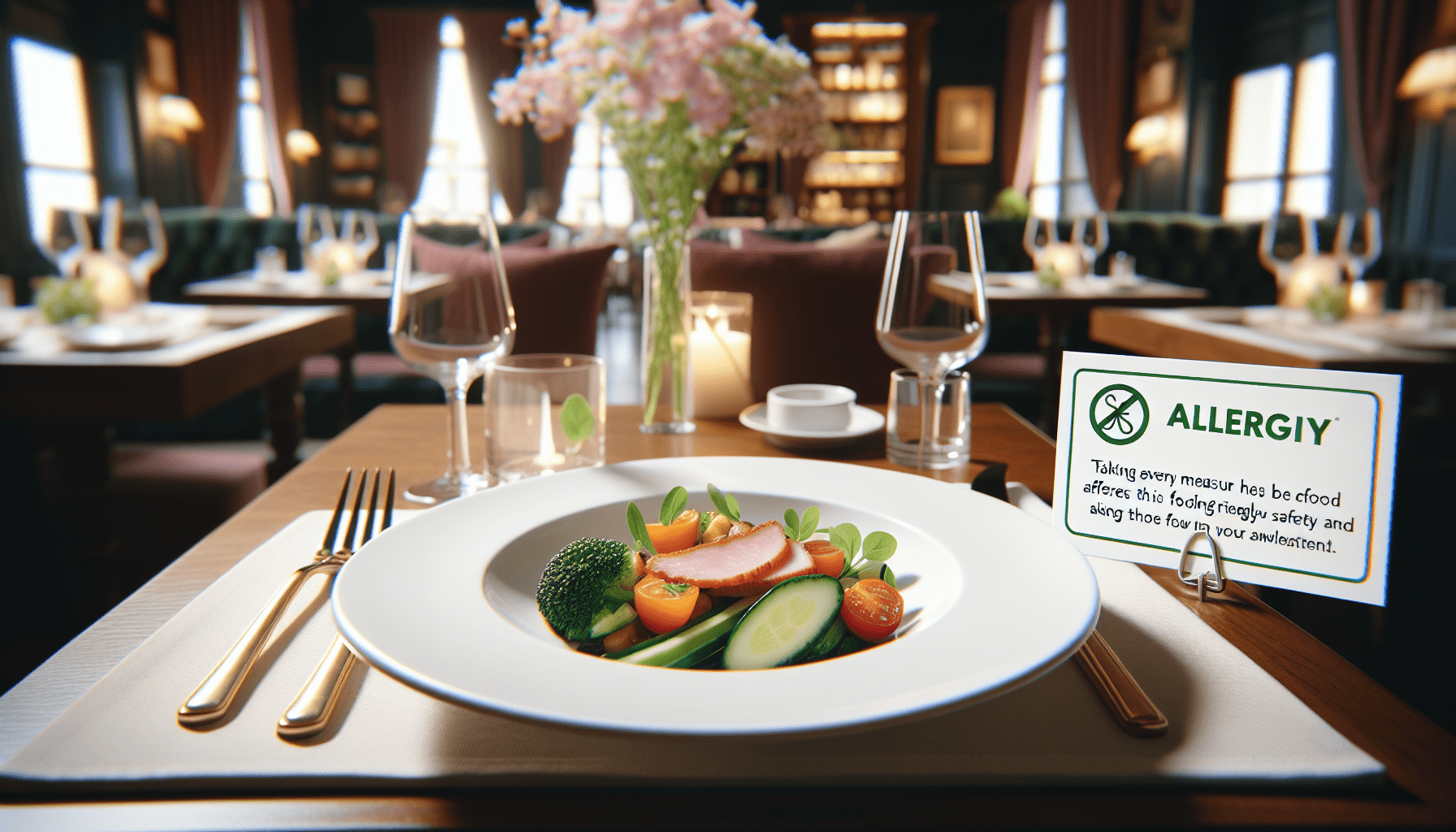Eating out with a food allergy might seem daunting, but with some careful planning and proactive communication, you can still enjoy dining out without stress. In “How To Eat Out Safely With A Food Allergy,” you’ll discover essential tips for researching restaurants ahead of time, effectively communicating your allergy to restaurant staff, and making smart menu choices. This guide will empower you to navigate dining experiences confidently, ensuring your meals are both safe and enjoyable. Have you ever felt a pang of worry when dining out because of your food allergy? You’re not alone. Navigating the restaurant scene with a food allergy can be tricky, but it doesn’t have to keep you from enjoying a good meal out. With the right tips and strategies, you can eat out safely and confidently.
Understanding Food Allergies
Before delving into specific strategies, it’s important to understand the basics of food allergies. A food allergy is an immune system reaction that occurs soon after eating a certain food. Even a tiny amount of the allergenic food can trigger symptoms such as digestive problems, hives, or swollen airways. In some cases, a food allergy can cause severe symptoms or even a life-threatening reaction known as anaphylaxis.
Common Food Allergens
There are specific foods that are more likely to cause allergic reactions. Here’s a table listing the most common food allergens:
| Allergen | Examples of Foods |
|---|---|
| Dairy | Milk, cheese, butter, yogurt |
| Eggs | Egg whites, egg yolks, egg-based dishes |
| Peanuts | Peanut butter, peanut oil, any dish containing peanuts |
| Tree Nuts | Almonds, walnuts, pecans, cashews |
| Fish | Salmon, tuna, cod |
| Shellfish | Shrimp, crab, lobster |
| Soy | Tofu, soy milk, edamame |
| Wheat and Gluten | Bread, pasta, cereals, anything containing wheat or barley |
Preparing To Dine Out
Preparation is key when you have a food allergy. Here are some steps you can take to minimize risks.
Research the Restaurant
Before you even set foot in a restaurant, do some homework. Check the restaurant’s website for allergen information or call ahead to ask about their ability to accommodate food allergies. Look for places that have dedicated allergen menus or that are known for their allergy-friendly practices.
Read Reviews
Online reviews from other people with food allergies can be invaluable. Websites and apps like Yelp, AllergyEats, or TripAdvisor often have reviews that highlight how well a restaurant handles food allergies.
Make a Reservation
When making a reservation, inform the restaurant about your food allergy. Speak to a manager or head chef, and ask about their process for handling allergens. This gives the staff time to prepare and ensures they take your needs seriously.

Communicating Your Needs
Clear communication is essential. Here’s how to make sure your needs are understood and met.
Speak With Your Server
When you arrive, reiterate your food allergy to your server. Be specific about what foods you are allergic to and the severity of your allergy.
Bring an Allergy Card
Carrying an allergy card can be extremely helpful. The card should clearly list your allergens and any cross-contact concerns. Hand it to your server to pass on to the chef, ensuring that everyone involved in preparing your meal is informed.
Ask Questions
Don’t be afraid to ask detailed questions. Here are some examples:
- How is the dish prepared?
- Is there any risk of cross-contact with your allergen?
- Can the dish be modified to accommodate your allergy?
At the Restaurant
Once you’re at the restaurant, there are additional steps you can take to ensure safety.
Avoid Buffets and Family-Style Meals
These dining styles have a high risk of cross-contact. It’s best to stick to individually plated meals prepared in the kitchen.
Verify Your Order
When your meal arrives, politely verify with your server or the manager that your dish is free from allergens.
Inspect Your Meal
Take a moment to visually inspect your meal for any potential allergens. If anything appears suspicious, don’t hesitate to ask for a new meal or a manager’s assistance.

Emergency Preparedness
Even with the best preparation, accidents can happen. It’s crucial to be prepared for an emergency.
Carry Your Medications
Always have your medications with you, including any antihistamines and your epinephrine auto-injector. Make sure they are easily accessible.
Know How To Use Your Epinephrine Auto-Injector
Familiarize yourself with your epinephrine auto-injector so you can use it quickly and confidently in an emergency. Share this knowledge with those you are dining with, in case they need to assist you.
Emergency Contacts
Know the location of the nearest hospital and have emergency contact information readily available.
Traveling With a Food Allergy
Traveling with a food allergy requires extra planning but can be done safely and enjoyably.
Research Ahead
Research your destination to find out what local foods you might need to avoid. Look for allergy-friendly restaurants and stores in the area.
Bring Safe Snacks
Carry safe snacks and foods with you for situations where safe options may not be readily available.
Learn Key Phrases
If traveling to a country where the language is different, learn key phrases to communicate your food allergy. Consider carrying a translated allergy card.
Learning from Others
The food allergy community can be a great resource. Here are some ways to connect and learn:
Online Forums and Social Media
Join online forums or social media groups for people with food allergies. These communities often share restaurant recommendations, travel tips, and personal experiences.
Local Support Groups
Connecting with a local support group can provide real-world advice and a sense of community. Many cities have groups that regularly meet to discuss challenges and share solutions.
Legal Protections
Understanding your legal rights can empower you to advocate for yourself.
Food Allergen Labeling and Consumer Protection Act (FALCPA)
FALCPA requires that the labeling of foods must clearly identify any of the eight major food allergens they contain.
Americans with Disabilities Act (ADA)
In the U.S., severe food allergies can be considered a disability under the ADA. This means restaurants may be required to make reasonable accommodations for individuals with food allergies.
Conclusion
Dining out with a food allergy involves a careful blend of preparation, communication, and vigilance, but it can be done safely and enjoyably. By taking these steps, you are not only protecting yourself but also setting a standard for others to follow. Remember, enjoying a meal out shouldn’t be a source of stress—it should be a delightful experience. Bon Appétit!
